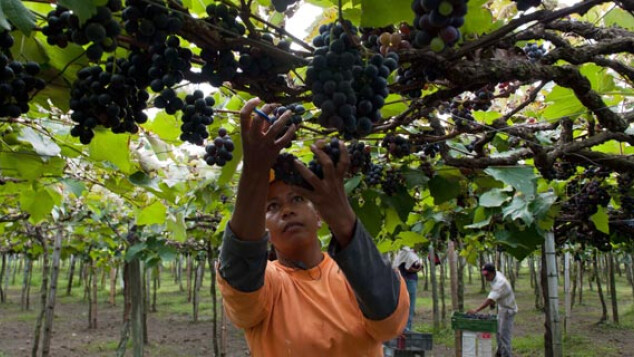Latin America's 'Agricultural Revolution'
Latin America's 'agricultural revolution' will help feed the world's growing population while also presenting a huge opportunity for investors. LatAm INVESTOR investigates...

If you’re the type of person that defines yourself by your country’s importance it’s been a tough half century to be British. Ever since the end of the Second World War, Britain has been knocked out of the podium places for most world league tables.
Share of world GDP, size of empire, importance of manufacturing base – they’ve all gone steadily down. But it’s not all doom and gloom. Because Britain is the third-most important market for Peruvian fruit and veg!
Yes, seriously. UK demand for fresh Peruvian fruit and veg grew by 47% last year, leaving it just behind the US and China.
OK, so maybe Peruvian veg imports aren’t the most important macroeconomic indicator going, but it’s a telling detail in an important investment trend. Regular readers will know that I’m very bullish on Latin American agriculture and so far the firms I’ve tipped have done well.
Both firms are based in the traditional powerhouse of Latin American farming, Las Pampas (a prairie-like flatland that spans Argentina and Brazil). But there is also a lot going on in Latin America’s emerging non-traditional agricultural exports.
We’re heading for a global food crunch
The basic premise behind the bullish stance on Latin America’s agriculture sector is simple. The main drivers are an increase in population and a general shift to richer – more food intensive – diets.
So it’s clear the world is going to need more food. The question is, where are we going to get it?
Latin America has less than 10% of the world’s population, but almost 30% of the world’s freshwater supply and 30% of the globe’s spare farmland. That’s why the Inter-American Institute for Cooperation on Agriculture (IICA), estimates Latin America has 42% of the world’s agricultural ‘spare capacity’.
The region has been a big deal in global food markets for a long time. But when the global food crunch hits, it will be the key to ensuring that the world can safely feed its massive population.
The stars have aligned for Latin America
This year LatAm INVESTOR has interviewed farmers and agricultural corporations in Ecuador, Guatemala and Peru. And although those three countries are very different the story coming out is the same. They have long been powerful producers of traditional exports such as sugar cane, coffee and banana. But now social and economic factors are coming together to fuel a boom in new export crops in other parts of the country.
What makes this all possible is Latin America’s incredibly topographical diversity. The three countries mentioned above – indeed most in the region – have an incredible mix of tropical, mountainous and coastal climates. As a result, you can grow almost anything there.
However, for a long time, farming in these countries only focused on a few key cash crops in certain areas.
That’s all changing now, according to Pierre Dedet. Pierre’s the CEO of Pakil Awal, a Guatemalan vegetable exporter that supplies the British market with everything from baby squash to mangetout. As he puts it, “the stars have aligned so that several factors have come together to make it possible to grow more”.
The first was that Latin American farmers and governments learned the hard way that relying on a couple of cash crops left them ruthlessly exposed to disease or falling prices. For example the largest cotton growers in Guatemala, for example, left the cotton industry when a combination of both led to it being virtually wiped out. As a result, there was a big push for diversification during the last 20 years – and the impacts are only beginning to be felt now.
The second is that local communities – ie indigenous people – are becoming a more powerful force. As a general rule – and this is a huge generalisation – they have more problems with big plantation owners. We’ve interviewed the biggest sugar and coffee owners in Latin America and they’re all employing innovative and worthy methods to get their workers onside. The berry, vegetable and exotic fruit producers don’t have that problem – it so happens that the best way for them to grow their produce is in partnership with small holders. Partnering with local farmers is a good way to stop them disputing a project.
The final – and perhaps most important factor – is productivity. Latin America’s cash crops, such as Guatemalan sugar, are among the most efficient in the world. But there are large swathes of Latin America where local farmers are employing inefficient farming methods. This isn’t a question of technology, in many cases it’s a case of sticking with tradition. But – and our interviews stand testament to this – methods are changing. Governments, agro corporations and farmers are working together to boost productivity.